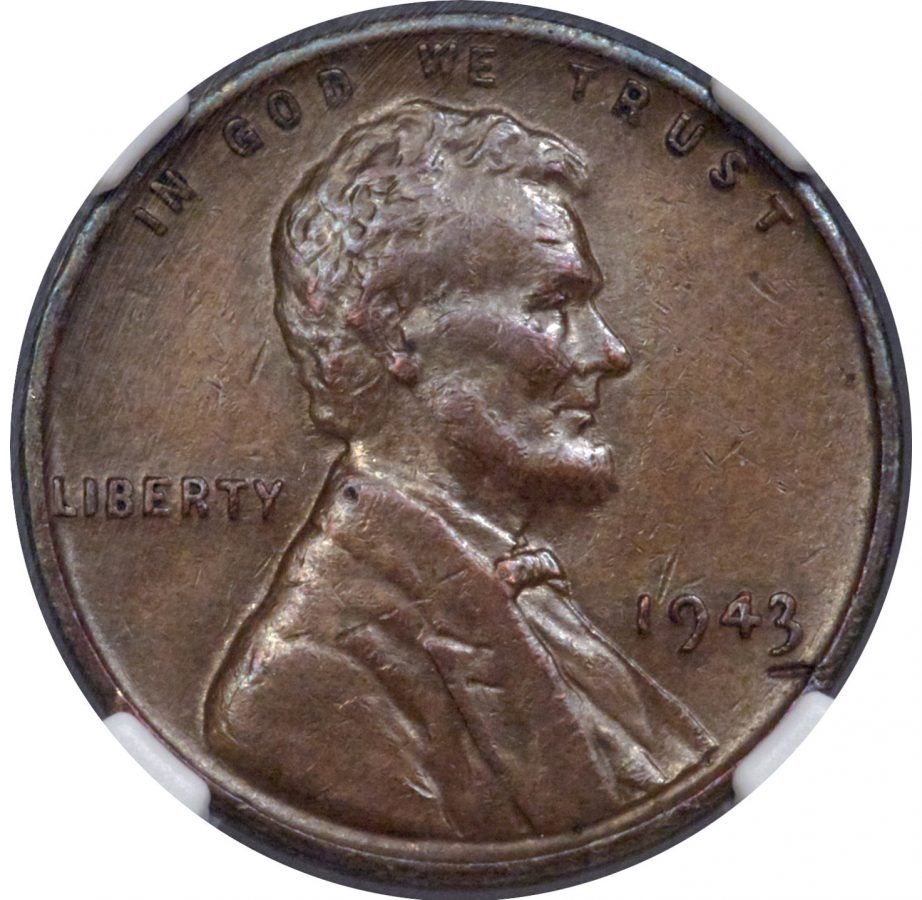The rarest ever American penny accidentally made by the U.S Mint then found in a schoolboy’s lunch money is set to be sold at auction for £1.3million.
The legendary 1943 copper Lincoln cent is described as the “most famous” coin made in error and it is thought just 20 were pressed.
The US Mint were ordered to make all 1943 Lincoln cents in steel, rather than the usual copper, to save the metal for WWII shell casings.
But a small number of bronze blanks were caught in the Mint’s presses and accidentally created coins so rare, it was rumoured Henry Ford would give a car to any finder.
The US public went wild rifling through loose change in search of the coin, apparently baffling Mint bosses who long denied the coins were ever made.
One was found by Don Lutes Jr, then 16, in change he got in his school cafeteria in March 1947.
Don, of Pittsfield, Massachusetts, remembered rumours from a few years earlier and made a call to Ford to see if his discovery would win him a new car.
When they told him the story was false, he stashed the coin away with others in his collection, and it’s now being sold following his death in September.
Bids on the online auction currently sit at $90,000 (around £70,000), but another 1943 copper cent sold to a private collector for £1.3million in 2010.
Sarah Miller, at Heritage Auctions, said: “This is the most famous error coin in American numismatics and that’s what makes this so exciting: No one really knows what it’s going to sell for.
“At one time Lutes’ discovery coin was reportedly offered for sale for $10,000 (£7,800).
“But by that point, Lutes gave up on marketing his coin and decided to just keep it for his collection.
“Sadly, Lutes passed away in September.”
The coin was introduced at the height of WWII, when copper was used extensively in almost every aspect of military production – from radio wiring to ammunition casings.
In 1942, to aid the war effort and save strategic metal, the Treasury Department ordered the U.S Mint to strike all 1943 Lincoln cents using steel planchets instead of copper.

But as soon as the new steel cents entered circulation, rumours began to circulate that a handful of copper examples had somehow slipped through the net.
A handful of copper planchets – which are actually bronze – had become lodged in the chutes that fed them into the coin press at the end of 1942.
When production resumed in 1943 they were dislodged by the new steel versions and ran unnoticed through the machinery.
The steel cents, which proved wildly unpopular with the public, were replaced in 1944 using brass recovered from spent shell casings.
Don made the discovery in his high school cafeteria while inspecting his change in 1947 and remembered rumours from a few years earlier.
He wrote to Ford to see if his discovery would win him a new car, and was told the story was false.
He asked the Treasury Department and received, the then, standard 26-word reply the Mint sent to all collectors requesting information on the 1943 bronze cents.
It said: “In regard to your recent inquiry, please be informed that copper pennies were not struck in 1943. All pennies struck in 1943 were zinc coated steel.”
He stashed the coin away with others in his collection, but in 1958 he heard another copper example sold at a coin convention for £31,000 and decided to tell his story.
But dealers remained suspicious and for years many refused to believe the existence of the 1943 copper penny, until decades later.
Further genuine examples have now been discovered and are among the most sought-after pennies.
The coin, referred to as the ‘Holy Grail of mint errors’, has long been a desirable asset among collectors well aware of Don’s story, according to experts.
The ‘Don Lutes, Jr. Discovery Specimen’ is being sold by Heritage Auctions.
The online auction is currently running and ends on January 10.
by Alex Shipman

